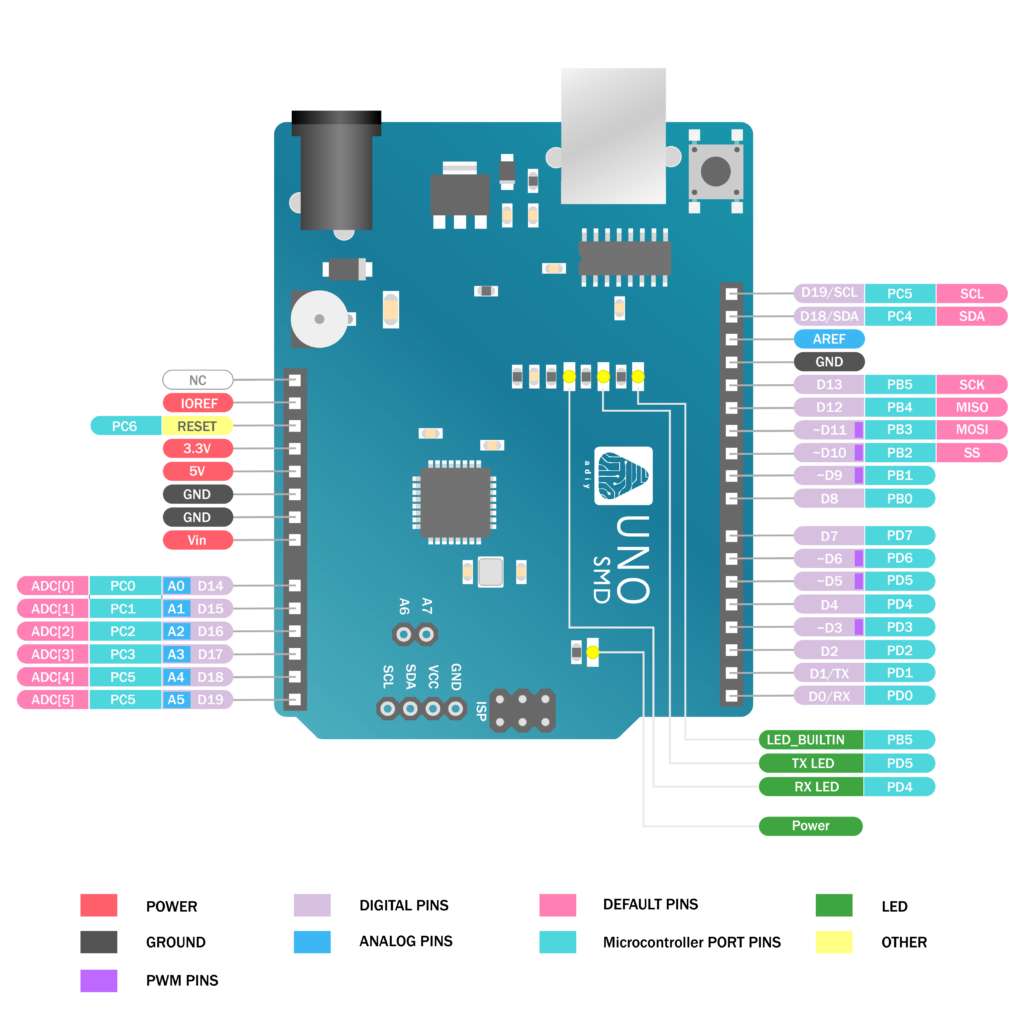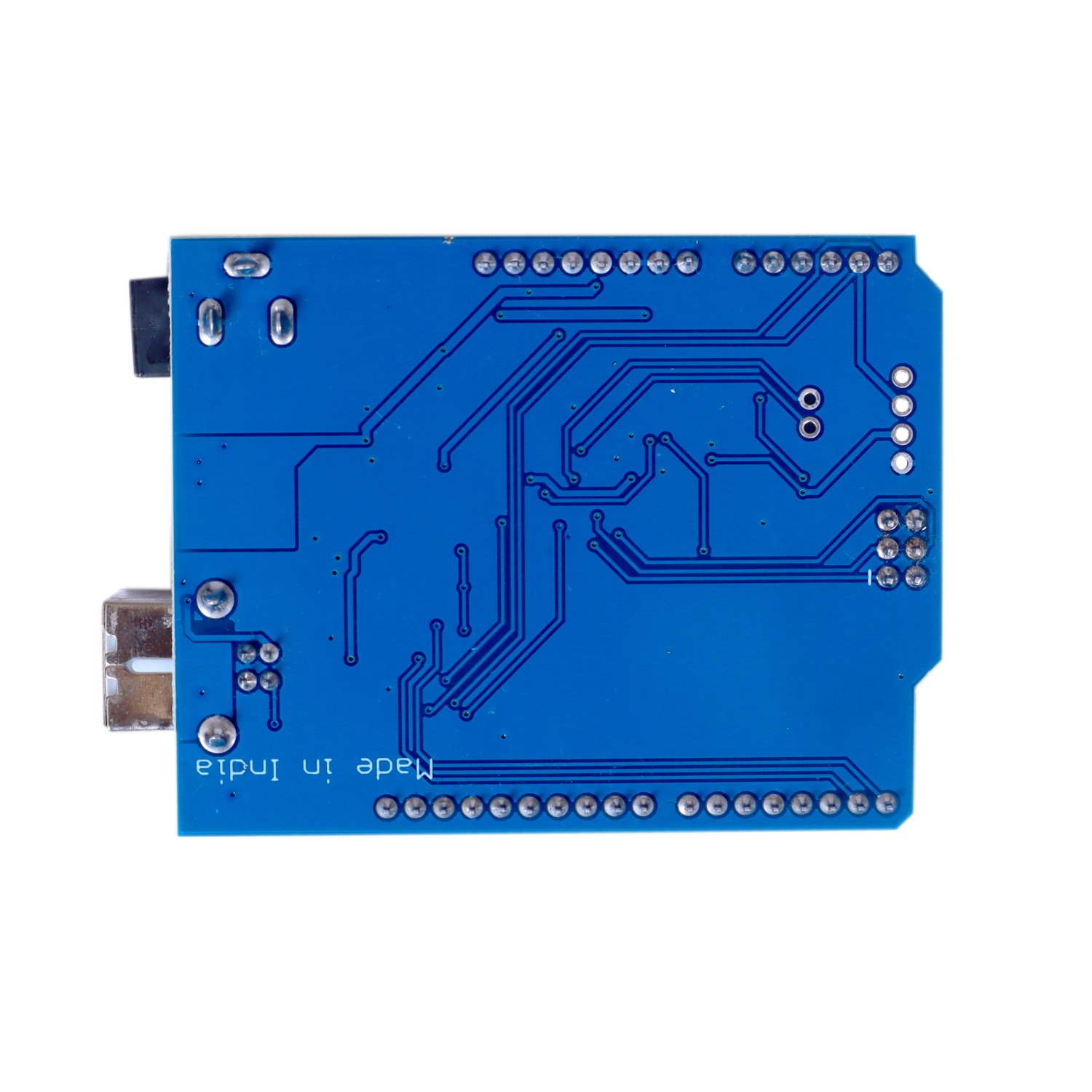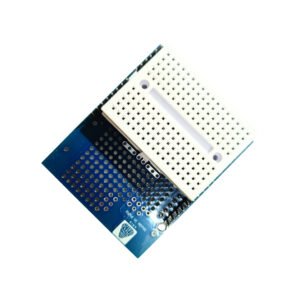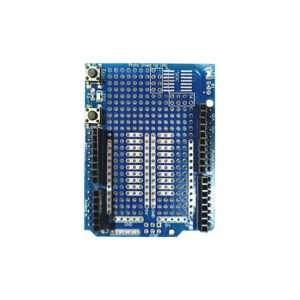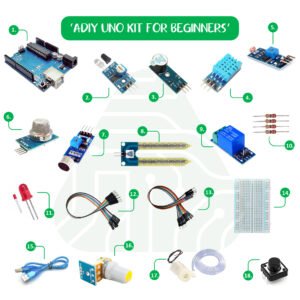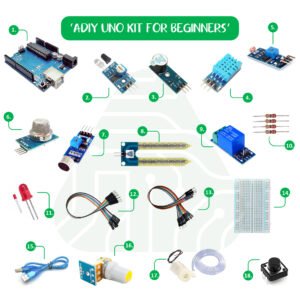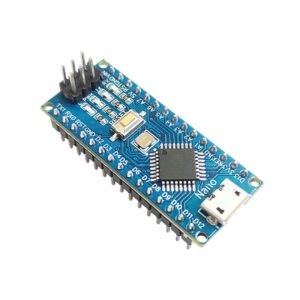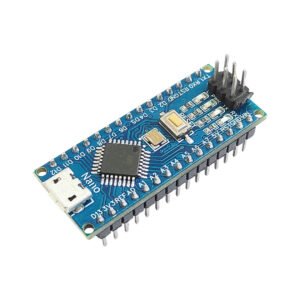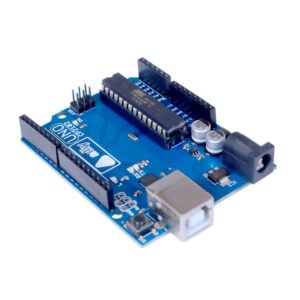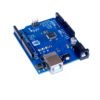
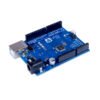

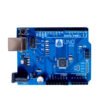



Uno Board SMD CH340C – Arduino uno Compatible
₹599.00 Original price was: ₹599.00.₹326.00Current price is: ₹326.00. (Including GST)
Uno Board SMD CH340C – ADIY Uno SMD ATmega328P Development Board is the low-cost version of the popular UNO R3 Arduino. Instead of ATmega16U2 processor, it is assembled with CH340C IC.
Applications: Uno Board SMD CH340C
- Arduino basic instrument
- Robot car
- Home automation
- Fingerprint door lock
- Security system
Uno Board SMD CH340C is a microcontroller board based on the ATmega328. It has 14 digital input/output pins (of which 6 can be used as PWM outputs), 6 analog inputs, a 16 MHz ceramic resonator, a USB connection, a power jack, an ICSP header, and a reset button. It contains everything needed to support the microcontroller; simply connect it to a computer with a USB cable or power it with an AC-to-DC adapter or battery to get started.
Uno Board SMD CH340C – ADIY Uno SMD ATmega328P Development Board is the low-cost version of the popular UNO R3 Arduino. Instead of ATmega16U2 processor, it is assembled with CH340C IC.
Uno Board SMD CH340C is a version of the ADIY UNO, but uses a surface mount version of the Atmega328P instead of the through-hole version. This version was made in response to a shortage in supply of the through-hole Atmega328P. It contains everything needed to support the microcontroller; simply connect it to a computer with a USB cable or power it with an AC-to-DC adapter or battery to get started. The Uno differs from all preceding boards in that it does not use the FTDI USB-to-serial driver chip. Instead, it features the Atmega8U2 programmed as a USB-to serial converter. The CH340 chip is an USB to Serial Converter. It may need to install a driver, to be able to detect your device to PC.
Specifications – Uno Board SMD CH340C
- Microcontroller: ATmega328
- Operating Voltage: 5V
- Input Voltage (recommended): 7-12V
- Input Voltage (limits): 6-20V
- Digital I/O Pins: 14 (of which 6 provide PWM output)
- Analog Input Pins: 6
- DC Current per I/O Pin: 40 mA
- DC Current for 3.3V Pin: 50 mA
- Flash Memory: 32 KB (ATmega328) of which 0.5 KB used by bootloader.
- SRAM: 2 KB (ATmega328)
Applications – Uno Board SMD CH340C
- Arduino basic instrument
- Robot car
- Home automation
- Fingerprint door lock
- Security system
Features – Uno Board SMD CH340C
1. High performance
2. Advanced RISC architecture
3. most single clock cycle execution
4. Fully static operation
5. On-chip 2-cycle multiplier
6. High endurance non-volatile memory segments
7. In-system programming by on-chip boot program
8. Programming lock for software security
9. Temperature measurement
10. Six sleep modes: Idle, ADC noise reduction, power-save, power-down, standby
11. Low power consumption
Pin Description – Uno Board SMD CH340C
- Power: UNO can be powered via the USB connection or with an external power supply. The power source is selected automatically. External (non-USB) power can come either from an AC to-DC adapter (wall-wart) or battery. The adapter can be connected by plugging a 2.1mm center positive plug into the board’s power jack. Leads from a battery can be inserted in the GND and Vin pin headers of the POWER connector. The board can operate on an external supply of 6 to 20
volts. If supplied with less than 7V, however, the 5V pin may supply less than five volts and the board may be unstable. If using more than 12V, the voltage regulator may overheat and damage the board. The recommended range is 7 to 12V. - The power pins are as follows:
- VIN: The input voltage to this board when it’s using an external power source (as opposed to 5V from the USB connection or other regulated power source). You can supply voltage through this pin, or, if supplying voltage via the power jack, access it through this pin.
- 5V: The regulated power supply used to power the microcontroller and other components on the board. This can come either from VIN via an on-board regulator and supplied by USB or another regulated 5V supply.
- 3V3: A 3.3V supply generated by the on-board regulator. Maximum current draw is 50 mA. GND: Ground pins.
- Memory: The ATmega328 has 32 KB (with 0.5 KB used for the bootloader). It also has 2 KB of SRAM and 1 KB of EEPROM.
- Input and Output: Each of the 14 digital pins on the Uno can be used as an input or output, using pin Mode(), digital Write(), and digital Read() functions. They operate at 5V. Each pin can provide or receive a maximum of 40mA and has an internal pull-up resistor (disconnected by default) of
20-50 kΩ. - Serial: 0 (RX) and 1 (TX). Used to receive (RX) and transmit (TX) TTL serial data. These pins are connected to the corresponding pins of the ATmega8U2 USB-to-TTL Serial chip.
- External Interrupts: 2 and 3. These pins can be configured to trigger an interrupt on a low, a rising or falling edge, or a change in value.
- PWM: 3, 5, 6, 9, 10, and 11. Provide 8-bit PWM output with the analogWrite() function.
- SPI: 10 (SS), 11 (MOSI), 12 (MISO), 13 (SCK). These pins support SPI communication using the SPI library.
- LED: 13. There is a built-in LED connected to digital pin 13. When the pin is HIGH value, the LED is on, when the pin is LOW, it’s off.
- The Uno has 6 analog inputs, labeled A0 through A5, each of which provide 10 bits of resolution (i.e. 1024 different values). By default they measure from ground to 5 volts, though is it possible to change the upper end of their range using the AREF pin and the analog Reference() function.
- I2C: A4 (SDA) and A5 (SCL). Support I2C (TWI) communication using the Wire library. There are a couple of other pins on the board.
- AREF: Reference voltage (0 to 5V only) for the analog inputs. Used with analog Reference().
- Reset: Bring this line LOW to reset the microcontroller. Typically used to add a reset button to shields which block the one on the board.
Software – Arduino uno Compatible Board
Resources – Uno Board SMD CH340C
Package Includes – 1 x Uno Board SMD CH340C – Arduino uno Compatible Board by ADIY
Warranty: 3Months
